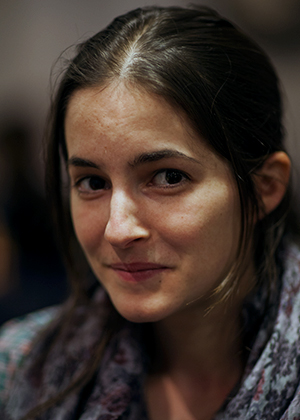Combining Computational Fluid Dynamics with Parametric models Machine-Learning for Parametric Computational Fluid Dynamics The proposed research project will create a link between the parametric CAD modelling software, Generative Components, and the computational fluid dynamics software, XFlow. In one direction, the link will enable parametric control of the analysis process. With bi-directional control, the analysis will act as a feedback to the initial geometry, that is, the result of the simulation will influence the focus of the analysis. Embedded within the link, and by using supervised machine learning and pattern recognition to enable the necessary rule extraction from the data, it can be possible to understand the specific relationship between cause and effect. The action taken thereafter, in order to obtain a predefined goal, is intelligently managed based on the rule. One of the potential benefits of this is reduced batch-simulation time when exploring early design decisions and later detail optimisation. Generative Components, by Bentley, is a parametric and associative CAD geometry software. XFlow, by NextLimit, uses Smoothed Particle Hydrodynamics (SPH) for simulating fluid flow. This is an alternative method to the traditional Computational Fluid Dynamics (CFD) software, since it is mesh-free and particlebased. This fundamental difference can allow faster, transient simulations at an appropriate resolution for the task. XFlow solves the Navier-Stokes non-linear equations with the Large Eddy Simulation (LES) model, as opposed to the traditional k-epsilon model. The constraint management system will establish the criteria by which to judge the analysis result and limit the action taken based on the extracted system rules. It has been suggested that we use a real-world application for testing, a live PLP project called the Oberoi Tower 2, in Mumbai. -- The main objective of this project is to merge several existing systems into one application. Current CFD modelling techniques, whilst providing great detail and accuracy are extremely time- consuming, suffering from high computational complexity and with huge demand on hardware. When modelling Computational Fluid Dynamics for structures such as buildings, the usual procedure is to set parameters for the model and leave software running overnight. The system must be run again every time the parameters are changed in order to update the model. This means that when this is used to optimise the structure of a building, for example, the process is very lengthy. Whilst our aim is not to significantly reduce hardware demands or algorithmic complexity, we intend to reduce the long process of optimising external structure by incorporating Machine Learning techniques to allow a feedback loop in the system enabling some optimisation during the modelling process. Essentially, given initial parameters and a basic CFD model of the structure, we can learn a more detailed model which is capable of suggesting areas of strongest CFD turbulence. This would allow an update stage in the initial parameters. Then, as the model/parameters begin to converge, a more accurate model can be created, yielding the final structure/mesh. Some useful supervised and semi-supervised learning techniques which may be useful are neural networks, decision trees/SVMs and possibly Markov-chain-monte-carlo methods or a combination method. Our approach will use data-mining on pre-existing data/designs to learn the CFD model whilst testing should begin on simple, more 'intuitively' predictable models. Our recent presentation.
And here is the final project report |
VEIV group Project |


